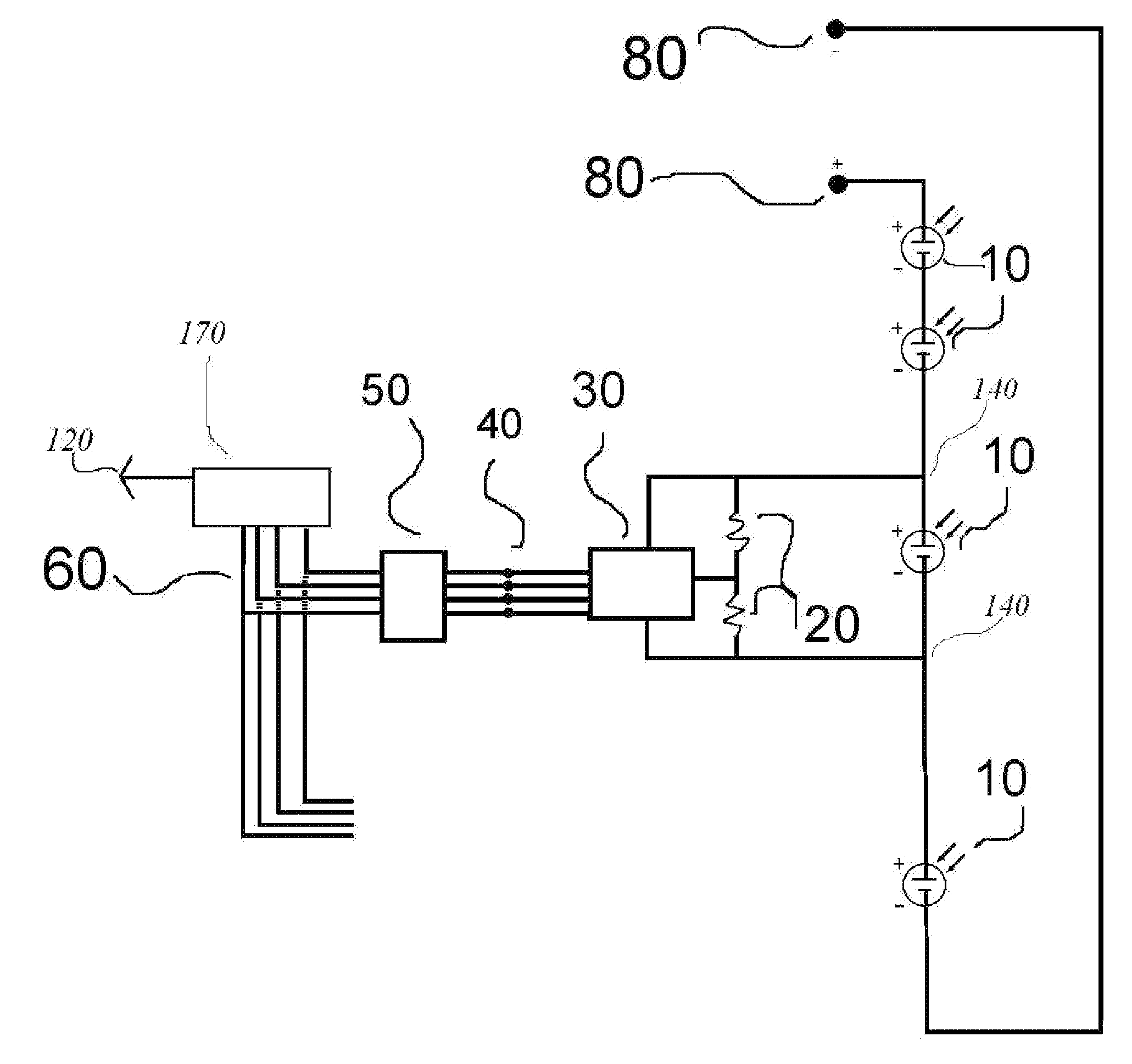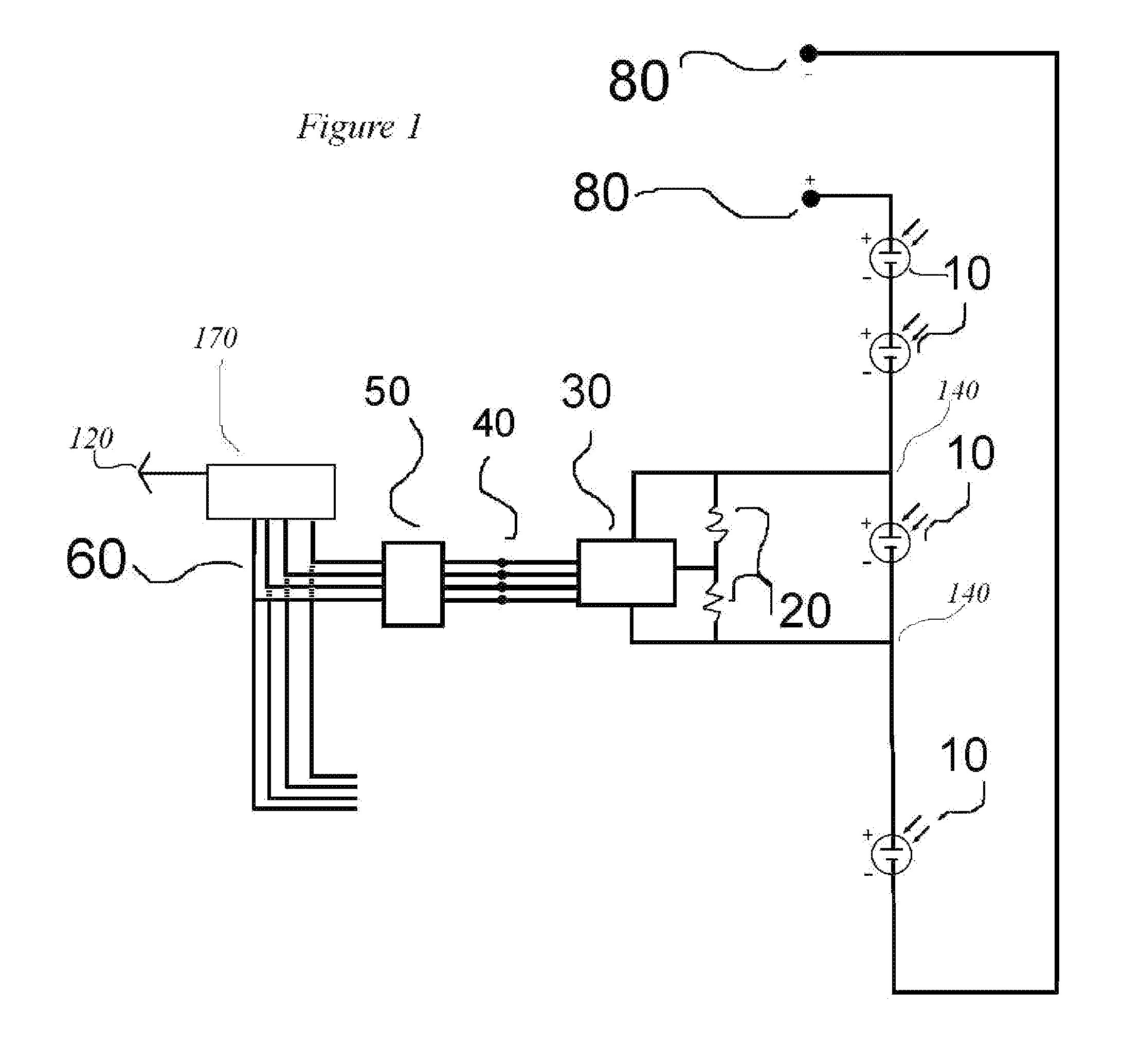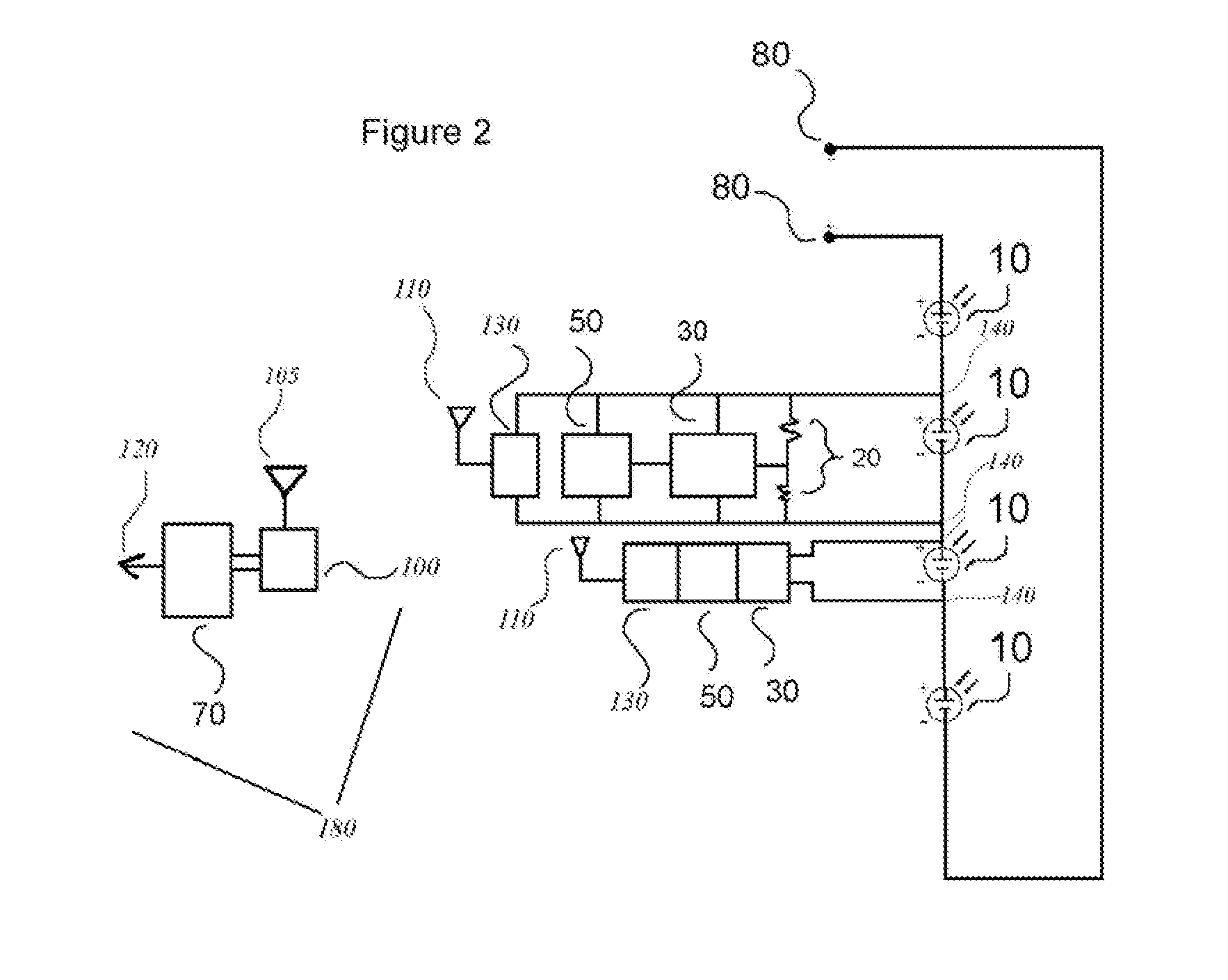System for Monitoring Individual Photovoltaic Modules
- Summary
- Abstract
- Description
- Claims
- Application Information
AI Technical Summary
Benefits of technology
Problems solved by technology
Method used
Image
Examples
Embodiment Construction
[0015]FIG. 1 is a schematic view of the present invention using a wired system
[0016]FIG. 2 is a schematic view of the present invention using a wireless system
[0017]FIG. 3 is a schematic view of the present invention using a signaling over power system
DETAILED DESCRIPTION OF THE PREFERRED EMBODIMENT
[0018]The system of the present invention uses sensing technology relating to individual PV modules (10) in order to detect fluctuations and relevant output levels of individual PV modules (10). FIG. 1 is a view of the present invention in its preferred embodiment. In this schematic view, we see how wired connections lead information directly from the individual PV modules (10) toward the system's sensing components of the overall solar array. The system receives power (140). A minimal amount of wires lead to the voltage level sensing circuit (20). The voltage level sensing circuit (20) receives voltage levels from the individual PV module (10) in its connection stream. In this manner, t...
PUM
 Login to View More
Login to View More Abstract
Description
Claims
Application Information
 Login to View More
Login to View More - R&D Engineer
- R&D Manager
- IP Professional
- Industry Leading Data Capabilities
- Powerful AI technology
- Patent DNA Extraction
Browse by: Latest US Patents, China's latest patents, Technical Efficacy Thesaurus, Application Domain, Technology Topic, Popular Technical Reports.
© 2024 PatSnap. All rights reserved.Legal|Privacy policy|Modern Slavery Act Transparency Statement|Sitemap|About US| Contact US: help@patsnap.com










